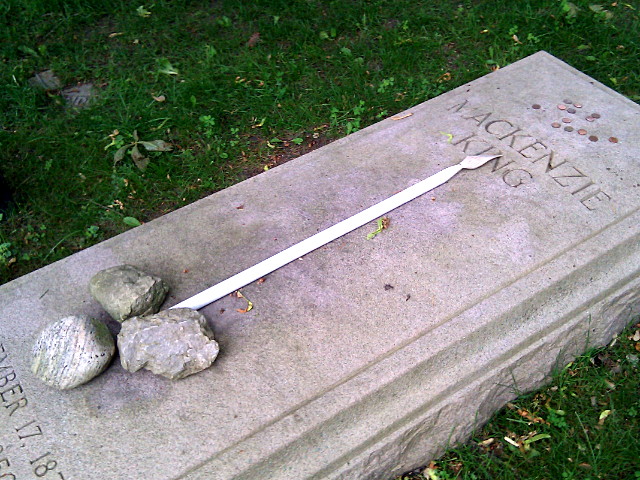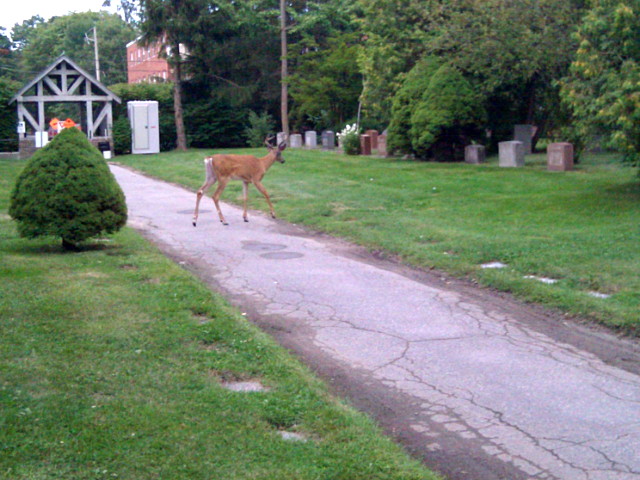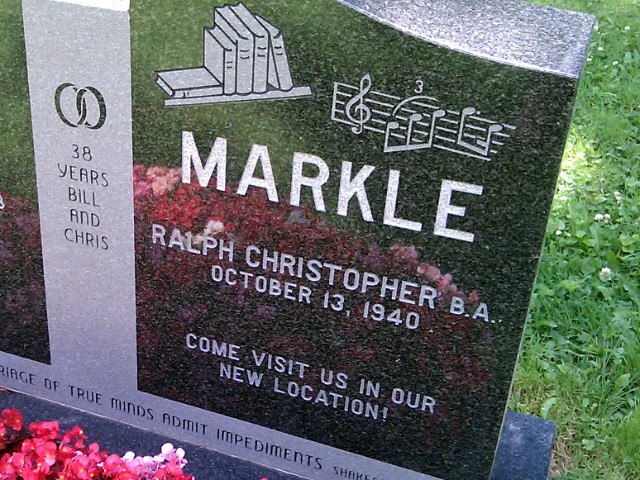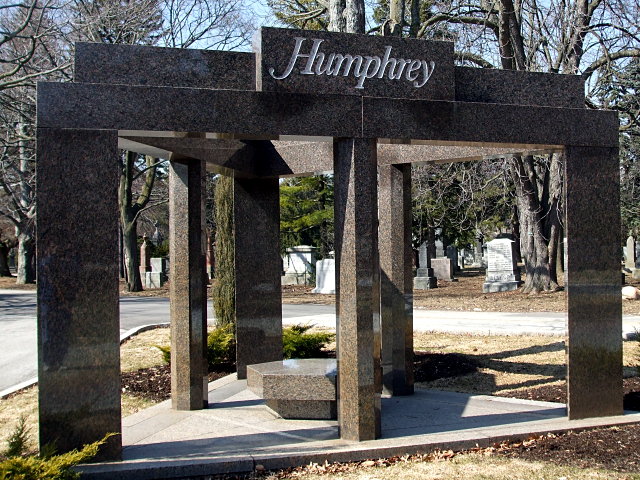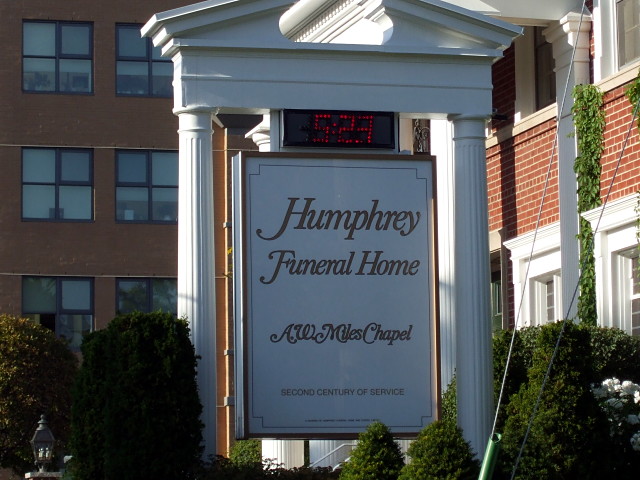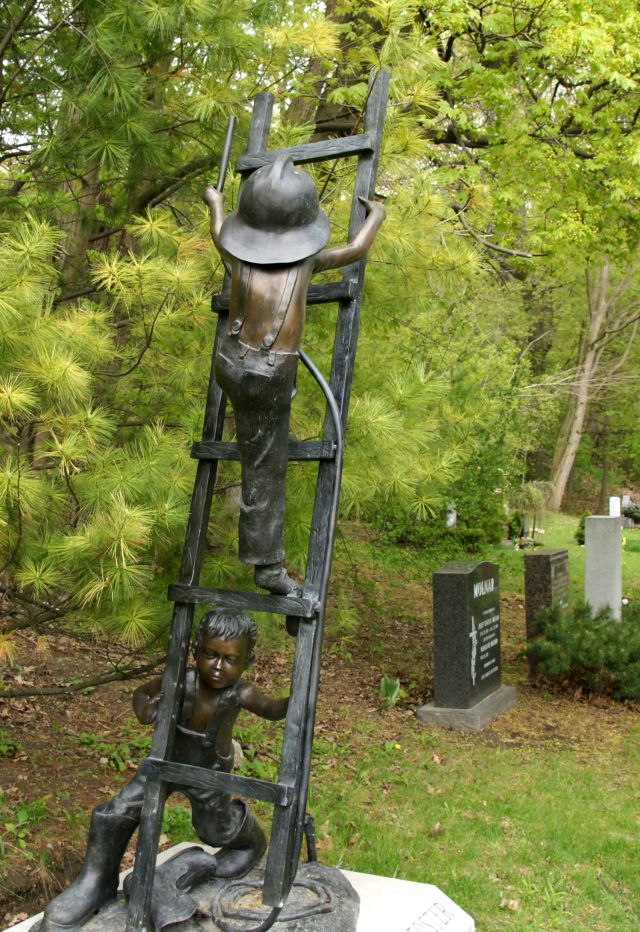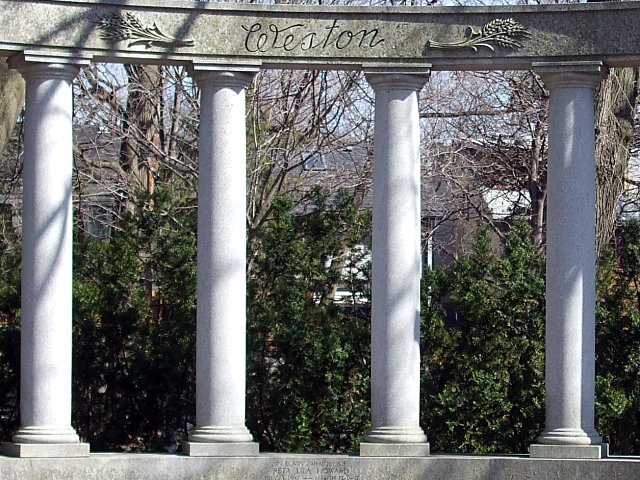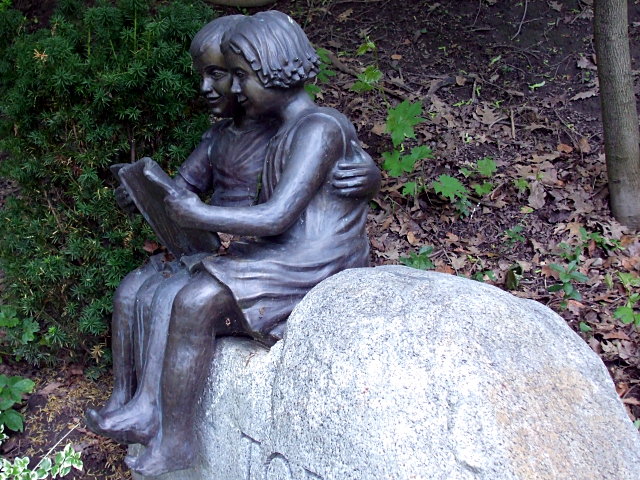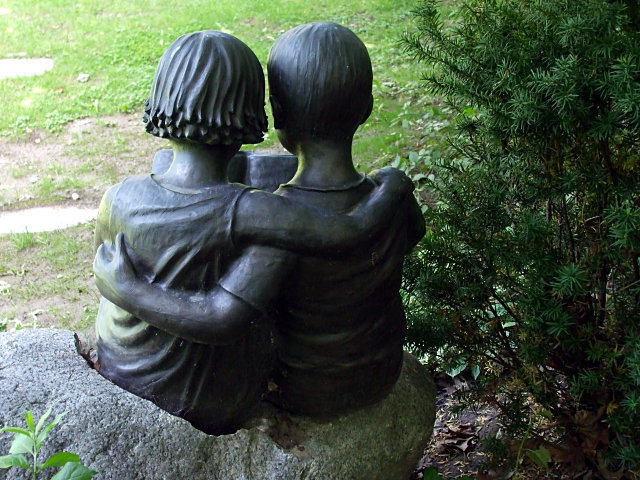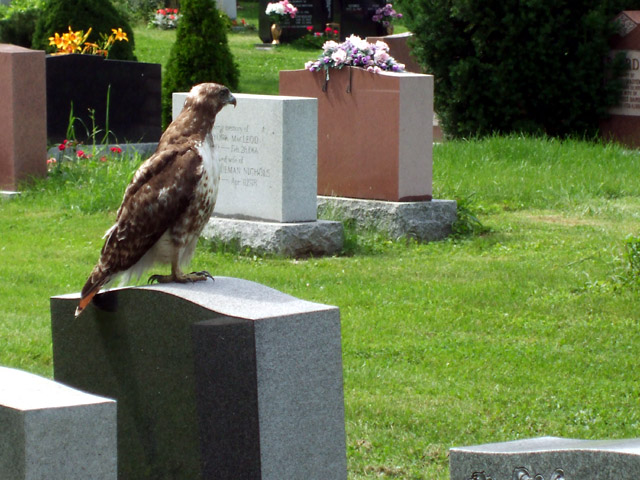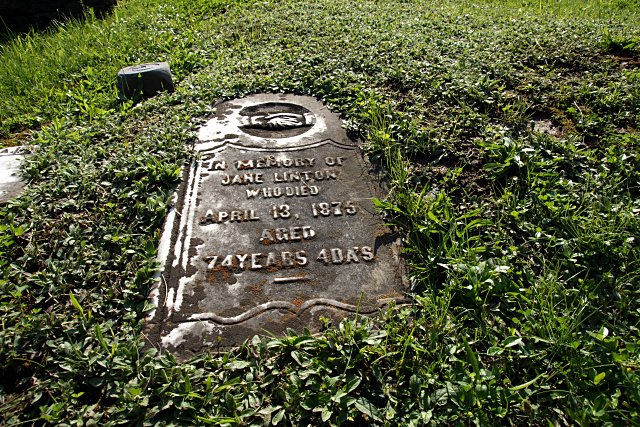I rode or walked past William Lyon Mackenzie King‘s grave in Mount Pleasant Cemetery almost every day for three years until last month. Like most graves, not much changed from day to day. Other than a fresh floral arrangement placed on or near the ledger stone every week or two, it was pretty much the same all the time. This colourful yet reliably mundane official tribute got some company this spring when someone placed three rocks on the ledger. And then in early June, a wooden dowel carved into a candle flame and eight (and then thirteen) pennies appeared:
More coins were added to the pot over the next couple of weeks, until on June 27, someone decided to turn the carved dowel and rocks into a slightly more obvious phallic symbol:
